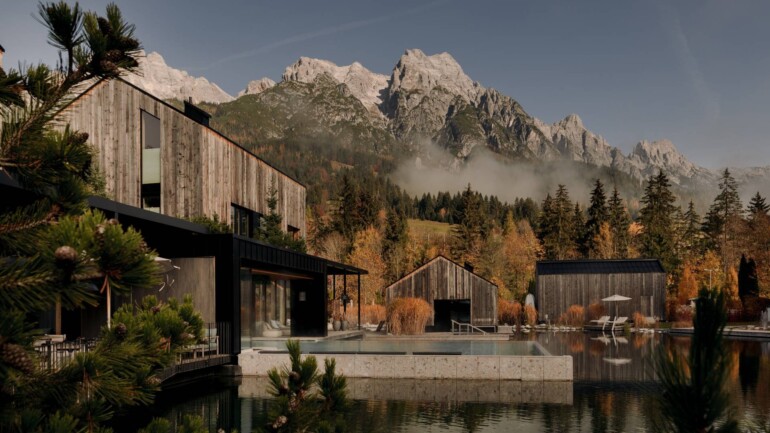Nestled between the Leoganger Steinbergen and Kitzbüheler Alpen lies the five-star »Naturhotel« Forsthofgut. The establishment originated as a forestry business and has been family-owned since 1617. Today, it preserves its history while translating it into the present: At its core is the idea of conscious experience—architecture, nature, culinary experiences and hospitality intertwine, giving each stay its own rhythm.
What appears today as a spacious, luxurious retreat began with an unassuming step: In 1960, the Forsthofgut rented out two rooms to holiday guests for the first time—at the address Hütten No. 2, still current today, one of the oldest houses in the village of Leogang. From this beginning, an ensemble developed over the decades, steadily growing and evolving without losing its original philosophy: To this day, the Forsthofgut is about pausing and experiencing nature, architecture, and hospitality in harmony.
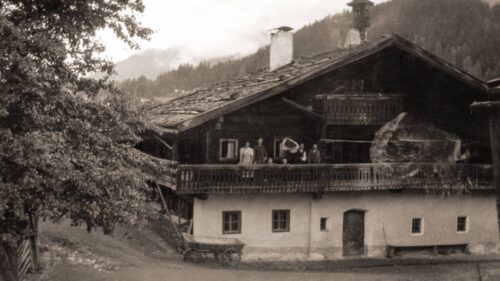
The house number—Hütten No. 2—bears witness to this: The Forsthofgut was one of the first houses in the Hütten district of Leogang. The first holiday guests could stay at the Forsthofgut from 1960.
The natural swimming pond forms the center of the five-star establishment and a tranquil focal point around which life at the Forsthofgut unfolds. Its sight evokes literary memories of Henry David Thoreau, who in »Walden, or, Life in the Woods« (1854) described how he lived in a simple cabin by Walden Pond to exist consciously and in harmony with nature: »I went to the woods because I wished to live deliberately.«
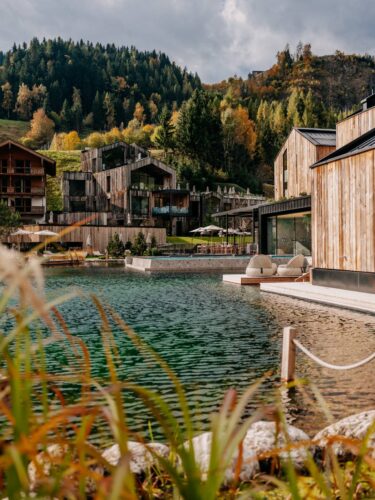
This idea of a conscious life in harmony with nature and spirit has lost none of its fascination to this day—and it resonates clearly at the Forsthofgut. The hotel embraces this desire for introspection and mindfulness and translates it into a contemporary form of hospitality and retreat, always in dialogue with its surroundings.
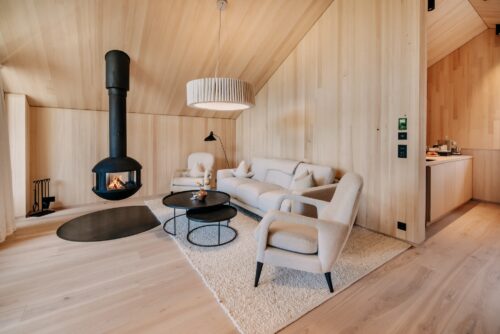
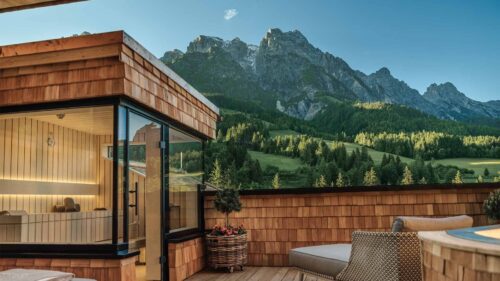
The Wellness & Family Hotel Forsthofgut today comprises 109 rooms and suites, designed with natural materials and a clear contemporary design language. This rootedness in nature and history is also reflected in the hotel’s overarching design philosophy, which goes far beyond the harmonious fusion of traditional and modern architectural styles. Materials, craftsmanship, and the dramaturgy of spaces are chosen with great care: wood, stone, glass, and textiles enter into a lively dialogue with the surrounding landscape. The furnishings always show attention to detail; for example, some of the high-quality design furniture comes from the renowned furniture manufacturer Wittmann.
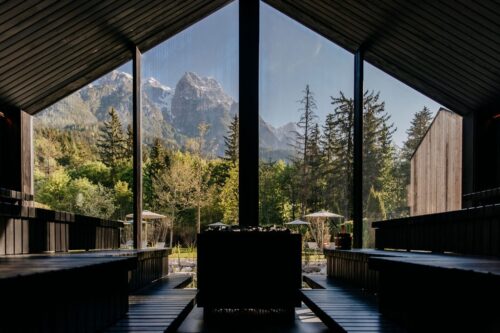
The holistic concept of the waldSPA includes state-of-the-art longevity offerings as well as individually tailored regeneration and prevention programs, accompanied by innovative treatments for vitality and balance. It is complemented by classic wellness rituals such as massages, saunas, steam baths, and relaxation zones, which always offer views of nature and make the interplay of body, mind, and surroundings tangible.
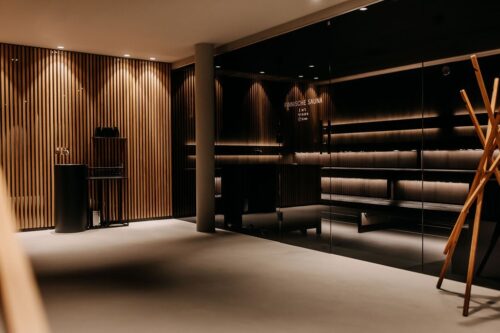
The variety of culinary experiences ranges from the Japanese restaurant Mizumi with a sushi master in the open show kitchen, to fine dining at Silva, and traditional cuisine at 1617. Additionally, there are experimental cocktails at the hotel bar Botanist, designed in the style of a 20th-century apothecary, as well as in the weinWALD, where guests can discover and taste a wide variety of international wines under the guidance of sommeliers.
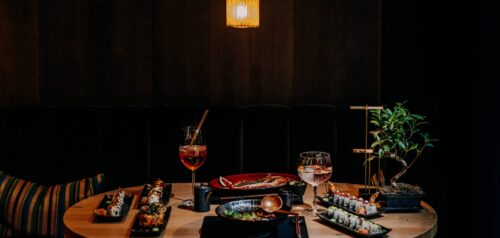
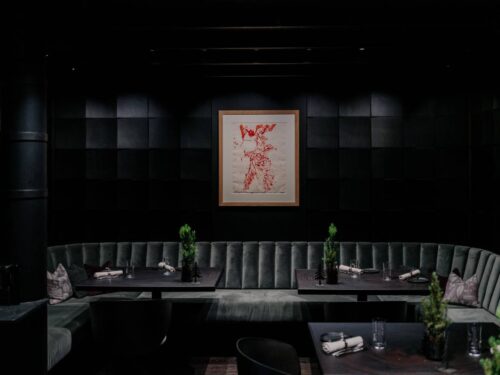
The complexity and ethos of the Forsthofgut are also impressively reflected in the art it houses. Works by significant artists such as Erwin Wurm, Martha Jungwirth, Anselm Kiefer, Georg Baselitz, Marc Brandenburg, Gregor Hildebrandt, Mary Ramsden, Sylvie Fleury, or Stephan Balkenhol are not intended as decorative accessories here, but as artistic impulses. An outstanding example is Martha Jungwirth’s expressive painting, which vibrates between abstraction and figuration and unfolds an unexpected resonance in dialogue with the alpine spaces.
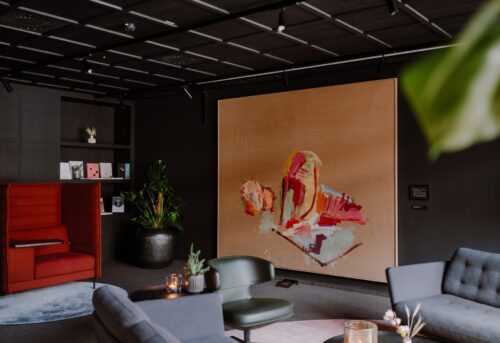
Martha Jungwirth, »Untitled«, 2022
Oil on paper and canvas
With the work »Untitled« from the series »Francisco de Goya, Still Life with Ribs and Lamb’s Head« (2022), Jungwirth takes up the Spanish artist’s eponymous work and reinterprets it. She mirrors the form of the lamb’s head and the disassembled ribs that characterize Goya’s still life. The work was exhibited at the Guggenheim Museum Bilbao.
The intention of allowing guests to become part of a cultural discourse is also evident in the almost natural encounter with contemporary art. Immediately upon entering, one encounters Erwin Wurm’s monumental sculpture Big Suit (2010/2016)—an oversized, empty suit that exists without a body. A garment normally closely associated with a person appears here as a gigantic, almost formless shell in space. It is precisely in this absence that its power lies: questions of identity, power, and presence are raised. The depiction of the headless suit-wearer is characteristic of Wurm’s ongoing engagement with the concept of sculpture and his view of society.
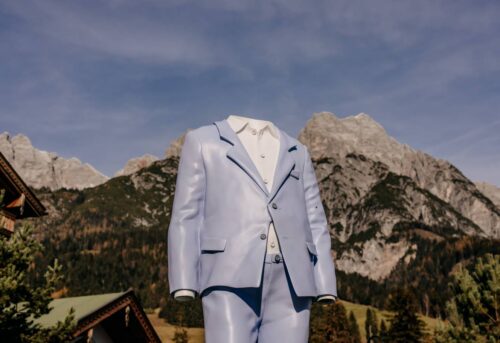
Erwin Wurm, »Big Suit«, 2010/16
Aluminum, paint
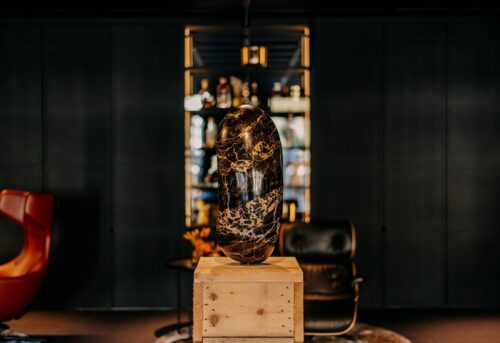
Erwin Wurm, »Respect«, 2020
Portoro Marble
The sculpture »Respect« (2020), from one of Wurm’s most recent series of works, depicts an oversized sausage made of polished marble, whose form almost evokes ancient statues. In addition to the two sculptures, two photographs are also exhibited in the Workation Room, provided as a loan by the Salzburg gallery Thaddaeus Ropac.
The conversation about art continues – in personal encounters with artists, in the podcast »waldGEFLÜSTER« or at regularly held Art Talks. Artists, gallerists, and art historians such as Jan Wentrup, Thaddaeus Ropac, Helmut Friedel, or Cornelia Stender engage in dialogue with guests. Thus, the hotel becomes not only a stage for contemporary art but also a forum where its social relevance is discussed. The fact that all of this takes place in a house with 400 years of history makes the experience all the more special.
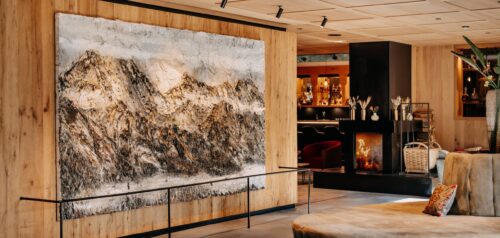
Anselm Kiefer, »Alkahest«, 2011
Emulsion, acrylic, oil, shellac and object on canvas
The series of works »Alkahest« consists of a number of monumental canvases, sculptures, and overpainted photographs. Alkahest is an artificial word used in alchemy, referring to a solution whose recipe alchemists sought: with this solution, any substance could be dissolved or broken down into its elements. In this work, mountains and rock are “dissolved” through erosion when encountering water – sediments shift, and the mountain is gradually worn away. The liquid Alkahest, which could anticipate or accelerate this natural process, is located in a glass fixed in the center of the image. The work points to Kiefer’s deep interest in transience and the cycle of creation and destruction.
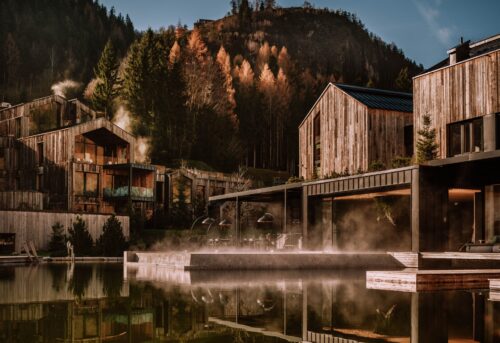
The Forsthofgut sees itself as a refuge where history is continued, art is part of everyday life, and design is always pleasantly subtly present. Here, luxury is not expressed in abundance, but in understated precision and contemporaneity. It is a place where nature and architecture, art and recreation come together, and where hospitality means offering inspiration and involving people. [DM]

